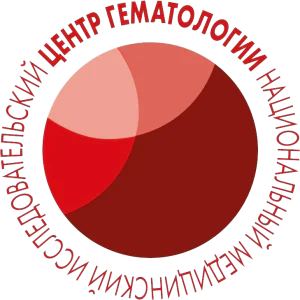HIF-Dependent Mechanisms of Relationship between Hypoxia Tolerance and Tumor Development
Publication type: Journal Article
Publication date: 2021-09-03
scimago Q2
wos Q4
SJR: 0.659
CiteScore: 3.8
Impact factor: 2.2
ISSN: 00062979, 16083040
PubMed ID:
34903150
Biochemistry
General Medicine
Abstract
Oxygen deficiency is one of the key pathogenetic factors determining development and severity of many diseases, including inflammatory, infectious diseases, and cancer. Lack of oxygen activates the signaling pathway of the hypoxia-inducible transcription factor HIF in cells that has three isoforms, HIF-1, HIF-2, HIF-3, regulating expression of several thousand genes. Throughout tumor progression, HIF activation stimulates angiogenesis, promotes changes in cell metabolism, adhesion, invasiveness, and ability to metastasize. HIF isoforms can play opposite roles in the development of inflammatory and neoplastic processes. Humans and laboratory animals differ both in tolerance to hypoxia and in the levels of expression of HIF and HIF-dependent genes, which may lead to predisposition to the development of certain oncological disorders. In particular, the ratio of different histogenetic types of tumors may vary among people living in the mountains and at the sea level. However, despite the key role of hypoxia at almost all stages of tumor development, basal tolerance to oxygen deficiency is not considered as a factor of predisposition to the tumor growth initiation. In literature, there are many works characterizing the level of local hypoxia in various tumors, and suggesting fundamental approaches to its mitigation by HIF inhibition. HIF inhibitors, as a rule, have a systemic effect on the organism, however, basal tolerance of an organism to hypoxia as well as the level of HIF expression are not taken into account in the process of their use. The review summarizes the literature data on different HIF isoforms and their role in tumor progression, with extrapolation to organisms with high and low tolerance to hypoxia, as well as on the prevalence of various types of tumors in the populations living at high altitudes.
Found
Nothing found, try to update filter.
Found
Nothing found, try to update filter.
Top-30
Journals
|
1
2
3
|
|
|
Biochemistry (Moscow)
3 publications, 11.11%
|
|
|
International Journal of Molecular Sciences
2 publications, 7.41%
|
|
|
Frontiers in Neurology
1 publication, 3.7%
|
|
|
Frontiers in Pharmacology
1 publication, 3.7%
|
|
|
Cell Death and Disease
1 publication, 3.7%
|
|
|
Pharmacological Reports
1 publication, 3.7%
|
|
|
International Journal of Oncology
1 publication, 3.7%
|
|
|
Journal of Biological Engineering
1 publication, 3.7%
|
|
|
Biomedicine and Pharmacotherapy
1 publication, 3.7%
|
|
|
European Journal of Cell Biology
1 publication, 3.7%
|
|
|
Stem Cell Research and Therapy
1 publication, 3.7%
|
|
|
Биохимия
1 publication, 3.7%
|
|
|
Journal of Pain Research
1 publication, 3.7%
|
|
|
Medical Gas Research
1 publication, 3.7%
|
|
|
Naunyn-Schmiedeberg's Archives of Pharmacology
1 publication, 3.7%
|
|
|
Scientific Reports
1 publication, 3.7%
|
|
|
Archiv der Pharmazie
1 publication, 3.7%
|
|
|
Indian Journal of Clinical Biochemistry
1 publication, 3.7%
|
|
|
Current Medicinal Chemistry
1 publication, 3.7%
|
|
|
Cell Communication and Signaling
1 publication, 3.7%
|
|
|
Obstetrics Gynecology and Reproduction
1 publication, 3.7%
|
|
|
Siberian Journal of Oncology
1 publication, 3.7%
|
|
|
Critical Reviews in Oncology/Hematology
1 publication, 3.7%
|
|
|
1
2
3
|
Publishers
|
1
2
3
4
5
6
7
8
|
|
|
Springer Nature
8 publications, 29.63%
|
|
|
Pleiades Publishing
4 publications, 14.81%
|
|
|
Elsevier
3 publications, 11.11%
|
|
|
MDPI
2 publications, 7.41%
|
|
|
Frontiers Media S.A.
2 publications, 7.41%
|
|
|
Spandidos Publications
1 publication, 3.7%
|
|
|
Taylor & Francis
1 publication, 3.7%
|
|
|
Ovid Technologies (Wolters Kluwer Health)
1 publication, 3.7%
|
|
|
Wiley
1 publication, 3.7%
|
|
|
Bentham Science Publishers Ltd.
1 publication, 3.7%
|
|
|
IRBIS
1 publication, 3.7%
|
|
|
Tomsk Cancer Research Institute
1 publication, 3.7%
|
|
|
1
2
3
4
5
6
7
8
|
- We do not take into account publications without a DOI.
- Statistics recalculated weekly.
Are you a researcher?
Create a profile to get free access to personal recommendations for colleagues and new articles.
Metrics
27
Total citations:
27
Citations from 2025:
12
(44.44%)
Cite this
GOST |
RIS |
BibTex |
MLA
Cite this
GOST
Copy
Dzhalilova D. S., Makarova O. V. HIF-Dependent Mechanisms of Relationship between Hypoxia Tolerance and Tumor Development // Biochemistry (Moscow). 2021. Vol. 86. No. 10. pp. 1163-1180.
GOST all authors (up to 50)
Copy
Dzhalilova D. S., Makarova O. V. HIF-Dependent Mechanisms of Relationship between Hypoxia Tolerance and Tumor Development // Biochemistry (Moscow). 2021. Vol. 86. No. 10. pp. 1163-1180.
Cite this
RIS
Copy
TY - JOUR
DO - 10.1134/S0006297921100011
UR - https://doi.org/10.1134/S0006297921100011
TI - HIF-Dependent Mechanisms of Relationship between Hypoxia Tolerance and Tumor Development
T2 - Biochemistry (Moscow)
AU - Dzhalilova, Dzhuliia Sh
AU - Makarova, Olga V.
PY - 2021
DA - 2021/09/03
PB - Pleiades Publishing
SP - 1163-1180
IS - 10
VL - 86
PMID - 34903150
SN - 0006-2979
SN - 1608-3040
ER -
Cite this
BibTex (up to 50 authors)
Copy
@article{2021_Dzhalilova,
author = {Dzhuliia Sh Dzhalilova and Olga V. Makarova},
title = {HIF-Dependent Mechanisms of Relationship between Hypoxia Tolerance and Tumor Development},
journal = {Biochemistry (Moscow)},
year = {2021},
volume = {86},
publisher = {Pleiades Publishing},
month = {sep},
url = {https://doi.org/10.1134/S0006297921100011},
number = {10},
pages = {1163--1180},
doi = {10.1134/S0006297921100011}
}
Cite this
MLA
Copy
Dzhalilova, Dzhuliia Sh, and Olga V. Makarova. “HIF-Dependent Mechanisms of Relationship between Hypoxia Tolerance and Tumor Development.” Biochemistry (Moscow), vol. 86, no. 10, Sep. 2021, pp. 1163-1180. https://doi.org/10.1134/S0006297921100011.
Profiles

















